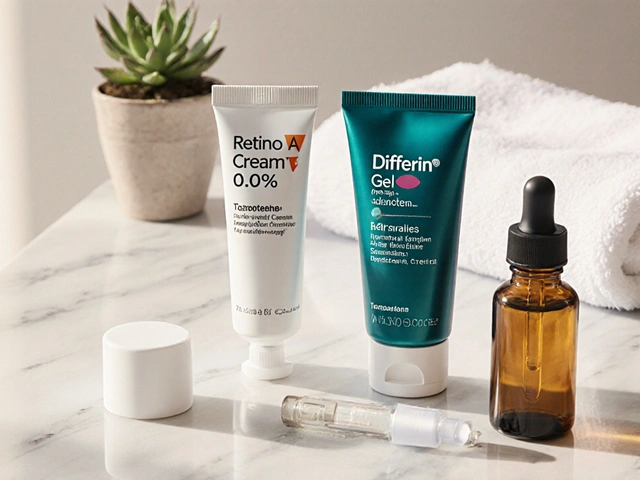Clotrimazole: What It Is, How It Works, and Safe Buying Tips
If you’ve ever dealt with athlete’s foot, jock itch, or a stubborn yeast infection, you’ve probably heard of clotrimazole. It’s a short‑acting antifungal that you apply directly to the skin or nails. In plain terms, it stops the fungus from growing, which lets your skin heal faster.
Clotrimazole belongs to the azole class of antifungals. It works by blocking an enzyme that fungi need to build their cell walls. Without that enzyme, the fungus can’t grow, and the infection shrinks. You’ll find it in creams, sprays, powders, and even lozenges for throat infections.
How Clotrimazole Works and What It’s Used For
Most people use clotrimazole for common skin infections: athlete’s foot (tinea pedis), ringworm (tinea corporis), jock itch (tinea cruris), and yeast infections of the skin or vaginal area. The product is sold over the counter in many countries, so you can pick it up at a pharmacy without a prescription.
For nail infections, you’ll need a longer‑term treatment—sometimes a nail lacquer that’s applied daily for several months. The key is consistency: applying the cream twice a day for the full course, even if the rash looks better, prevents a relapse.
Side effects are usually mild. Some people feel a slight stinging or burning when they first apply the cream. Rarely, you might get redness, swelling, or a rash. If any of those symptoms get worse, stop using it and talk to a pharmacist or doctor.
People with severe liver disease or those taking certain medications should check with a healthcare professional before using clotrimazole lozenges, because the oral form is absorbed systemically.
Buying Clotrimazole Online – Safety Checklist
Even though clotrimazole is an over‑the‑counter product, buying it online can be tricky. Here’s a quick safety checklist you can follow:
- Verify the pharmacy. Look for a clear physical address, a licensed pharmacist’s name, and a valid registration number (in the UK, check the MHRA register).
- Check for HTTPS. A secure site will show a padlock icon in the browser address bar.
- Read the product description. Make sure you’re getting the right strength (usually 1% for creams) and the correct form (cream, spray, or lozenge).
- Beware of too‑good‑to‑be‑true prices. Extremely low prices often mean counterfeit or expired stock.
- Look for user reviews. Real feedback can reveal shipping speed, packaging quality, and customer service.
If you’re unsure, stick to well‑known pharmacy chains that have an online portal. They’ll usually require you to confirm your age and location, which adds an extra layer of protection.
When your order arrives, inspect the packaging. The seal should be intact, the expiration date clear, and the label should match the product you ordered. If anything looks off, contact the seller immediately and request a refund.
Finally, store the medication as directed—usually in a cool, dry place away from direct sunlight. Keep it out of reach of children, even if it’s an over‑the‑counter product.
In short, clotrimazole is a reliable first‑line treatment for most superficial fungal infections. Use it as directed, watch for any unusual reactions, and follow the online safety steps if you decide to order it from the web. With the right approach, you’ll clear up the infection quickly and avoid unnecessary hassle.






